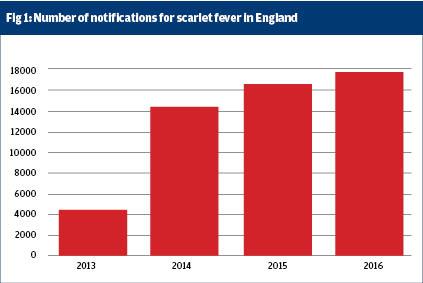
The number of scarlet fever cases has hit a 50-year high in England, new research reveals.
The number of cases reached close to 20,000 in 2016 – the highest level since 1967. This is a seven-fold rise from five years ago, which experts are struggling to explain.
‘Whilst current rates are nowhere near those seen in the early 1900s, the magnitude of the recent upsurge is greater than any documented in the last century,’ said Dr Theresa Lamagni, head of streptococcal surveillance at Public Health England.
Scarlet fever, an infection that causes a blotchy, red rash over the skin, is mostly observed in young children but can affect those of all ages. In the 1900s to 1930, rates of scarlet fever in England and Wales regularly hit 100,000. Since then rates have been falling, in part due to the use of antibiotics.
More recently, the disease has been on the rise in the UK since 2014, but experts are unable to pinpoint the exact reason for this. Symptoms usually develop within a week and include a rash (often starting on the chest and tummy before spreading to other areas), red face and a white, peeling coating of the tongue (known as ‘strawberry tongue’).
Doctors are urging people, and parents in particular, to be aware of the symptoms and early warning signs (soar throat, headache, swollen glands and sickness) so as to recognise when someone may have caught the infection.
‘We encourage parents to be aware of the symptoms of scarlet fever and to contact their GP if they think their child might have it,’ said Dr Lamagni.
An investigation by health authorities in England and Wales found a tripling of the incidences of scarlet fever between 2013-2014 – rising from 4,700 cases to more than 15,000. In 2016, almost 20,000 cases were reported.

There is no vaccine for the disease and all cases need to be reported immediately. There is, as of yet, no explanation as to why cases are on the rise, but experts have rules out a new strain of the infection through molecular genetic testing.
Dr Lamagni said: ‘We've always seen cases of scarlet fever - it's just the scale in the past has been much lower than the last few years.
‘We are concerned - it's quite a dramatic rise’
